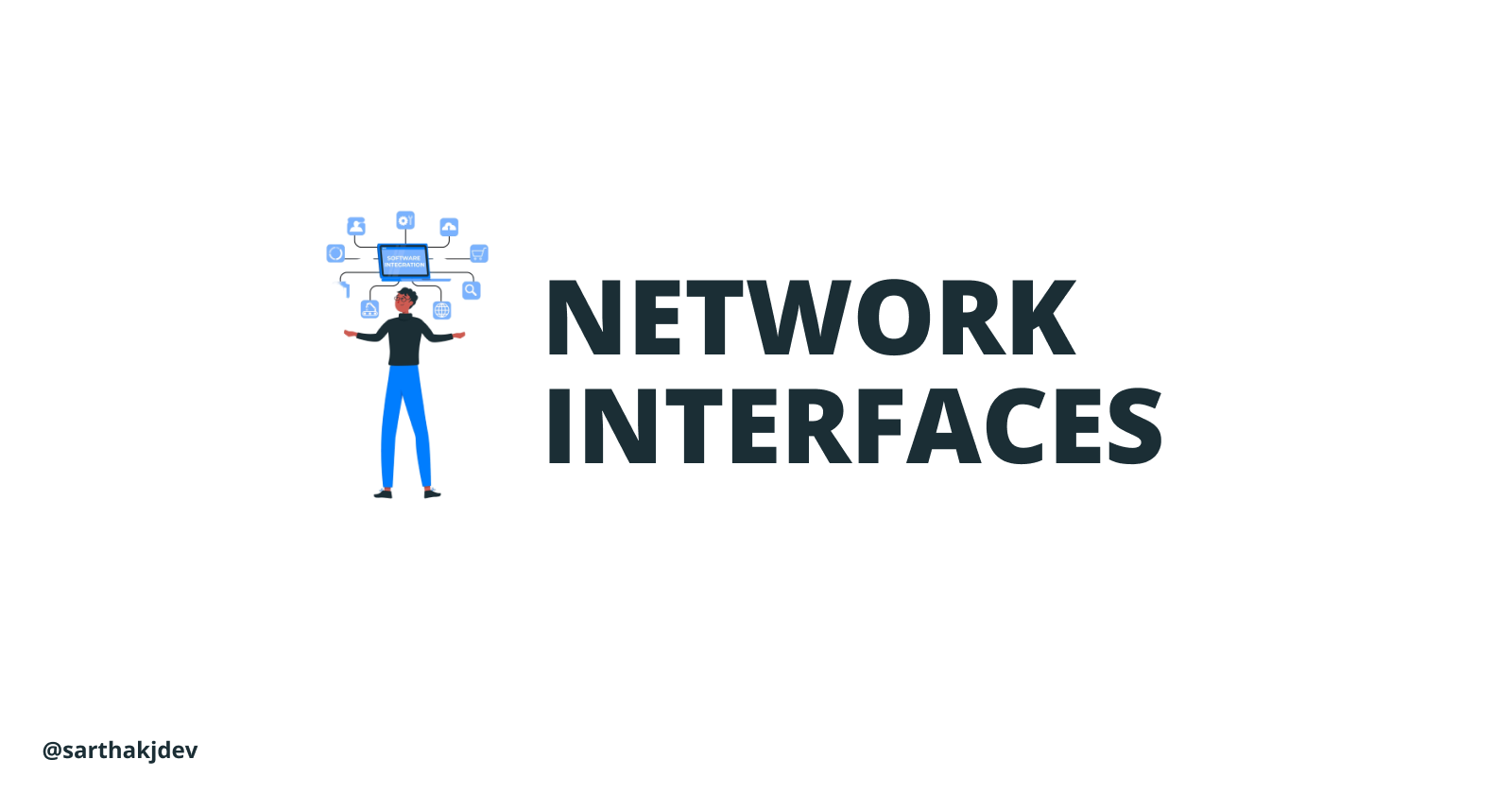Understanding Network Interfaces: Ethernet, WLAN, and Beyond
 Sarthak Jain
Sarthak Jain
Introduction
In my years as a software developer and dealing with a plethora of projects spanning various platforms, the importance of understanding network interfaces has never been clearer. These interfaces, both physical and virtual, form the backbone of how our software applications communicate with the outside world. Let's delve deep into the world of Ethernet, WLAN, and virtual interfaces.
Network Interface
A network interface represents the gateway between a computer or device and a network. It can manifest physically, such as an Ethernet port or Wi-Fi adapter, or virtually like a VPN connection. Throughout numerous projects, the nuances of these interfaces have been vital in setting up networks and troubleshooting issues.
Ethernet (Wired) Interfaces
Ethernet is a widely used technology for wired local area networks (LANs). By connecting devices using twisted pair cables, it provides a stable and fast connection.
Speeds: Traditional Ethernet started with speeds of 10 Mbps, but modern Ethernet can reach up to 100 Gbps.
Cabling: Commonly uses CAT5, CAT5e, or CAT6 cables with RJ45 connectors.
Use Cases: Due to its reliability, Ethernet is preferred for critical connections, like servers in a data center.
WLAN (Wireless) Interfaces
WLAN, or wireless local area network, offers the advantage of connectivity without cables, primarily leveraging Wi-Fi technology.
Frequency Bands: Operates on 2.4 GHz and 5 GHz bands.
Standards: Several standards exist, like 802.11a, 802.11b, 802.11g, 802.11n, 802.11ac, with each subsequent one offering better performance.
Use Cases: Perfect for mobile devices, home networks, and areas where wiring might be challenging.
Virtual Interfaces
Unlike the tangible nature of Ethernet and WLAN, virtual interfaces are software-defined. They allow the creation of multiple interfaces on a single physical device.
Types: Include loopback interfaces, tunnel interfaces, and subinterfaces.
Benefits: Useful for network simulations, creating secure tunnels (VPNs), or segmenting network traffic.
Use Cases: VPNs for secure remote access, VLAN configurations for traffic segregation.
Practical Interaction with Network Interfaces in Node.js
Node.js remains a staple in my software development toolkit, especially with its formidable network interaction capabilities.
const os = require('os');
const networkInterfaces = os.networkInterfaces();
for (const name of Object.keys(networkInterfaces)) {
for (const net of networkInterfaces[name]) {
if (net.family === 'IPv4' && !net.internal) {
console.log(`Interface: ${name}, IP Address: ${net.address}`);
}
}
}
This script enumerates all active IPv4 network interfaces.
Conclusion
From the solid and steadfast Ethernet to the flexibility of WLAN and the software-driven virtual interfaces, understanding the varied landscape of network interfaces is crucial for anyone in the software and networking domain. As we march forward into an even more interconnected world, this foundational knowledge will undoubtedly prove invaluable.
Official Documentation & Resources
Frequently Asked Questions
How do Ethernet and WLAN differ in terms of latency?
Ethernet, being a wired connection, generally offers lower latency compared to WLAN.What's the primary advantage of virtual interfaces?
They allow for flexibility in network configurations, like creating secure tunnels or segregating traffic without requiring additional physical hardware.
Subscribe to my newsletter
Read articles from Sarthak Jain directly inside your inbox. Subscribe to the newsletter, and don't miss out.
Written by

Sarthak Jain
Sarthak Jain
Hello, I'm a freelancer specializing in Node.js (Typescript) and React development, backed by strong DevOps expertise. I'm here to transform your ideas into real technological solutions, so feel free to reach out via DMs. My passion lies in various aspects of the development process, including setting up development environments, creating deployment pipelines, and constructing cloud infrastructures. Feel free to get in touch, and let's discuss how I can help bring your projects to life!